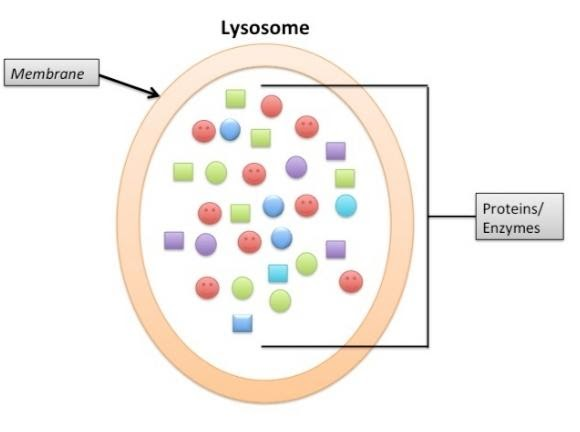
Do plant cells have lysosomes?
Answer
396.6k+ views
Hint: To know the presence of lysosomes one must remember the plant cell diagram. Lysosomes even perform the function of autolysis, that is when a cell dies it releases an enzyme that could engulf the remains of the dead cell.
Complete answer-
Let us start by knowing the basics of lysosomes. It was discovered by a Belgian biochemist Christian de Duve in 1955. These are upto 500 nm and are small and spherical vesicles. They basically perform the function of intracellular digestion and contain all the necessary enzymes that are required to digest all macromolecules. These enzymes are known as hydrolases, which are acidic in nature. To maintain this acidic condition protons are continuously pumped into the interior of lysosomes.

The above given is a diagrammatic view of a lysosome. It has its presence in most of the animal cells at around 50 to 10000 per cell. But when we talk of a plant cell, it is present as one single large cell and may be absent in some other plant cell. It is quite an observing fact that lysosomes are not of so much significance in plant cells. This happens due to the fact that plant cells possess a cell wall which performs the function of lysosomes. The cell wall also helps in keeping the foreign material outside the plant cell.
From the above diagram it is quite visible that lysosomes are made up of a proteinaceous enzyme and it is a membrane bound cell organelle. It is also clear that lysosomes are present in plant cells however not necessarily.
Note-
Lysosomes also act as a waste disposal system as they digest cells that have been used up by the cytoplasm. The waste is absorbed either by endocytosis that is the waste from outside of the cell or by autophagy that is from inside the cell.
Complete answer-
Let us start by knowing the basics of lysosomes. It was discovered by a Belgian biochemist Christian de Duve in 1955. These are upto 500 nm and are small and spherical vesicles. They basically perform the function of intracellular digestion and contain all the necessary enzymes that are required to digest all macromolecules. These enzymes are known as hydrolases, which are acidic in nature. To maintain this acidic condition protons are continuously pumped into the interior of lysosomes.

The above given is a diagrammatic view of a lysosome. It has its presence in most of the animal cells at around 50 to 10000 per cell. But when we talk of a plant cell, it is present as one single large cell and may be absent in some other plant cell. It is quite an observing fact that lysosomes are not of so much significance in plant cells. This happens due to the fact that plant cells possess a cell wall which performs the function of lysosomes. The cell wall also helps in keeping the foreign material outside the plant cell.
From the above diagram it is quite visible that lysosomes are made up of a proteinaceous enzyme and it is a membrane bound cell organelle. It is also clear that lysosomes are present in plant cells however not necessarily.
Note-
Lysosomes also act as a waste disposal system as they digest cells that have been used up by the cytoplasm. The waste is absorbed either by endocytosis that is the waste from outside of the cell or by autophagy that is from inside the cell.
Recently Updated Pages
Master Class 9 General Knowledge: Engaging Questions & Answers for Success

Master Class 9 English: Engaging Questions & Answers for Success

Master Class 9 Science: Engaging Questions & Answers for Success

Master Class 9 Social Science: Engaging Questions & Answers for Success

Master Class 9 Maths: Engaging Questions & Answers for Success

Class 9 Question and Answer - Your Ultimate Solutions Guide

Trending doubts
What are the elders in Goa nostalgic about class 11 social science CBSE

Define least count of vernier callipers How do you class 11 physics CBSE

Write the differences between monocot plants and dicot class 11 biology CBSE

Which of the following is not a feature of the election class 11 social science CBSE

The mass of oxalic acid crystals H2C2O42H2O required class 11 chemistry CBSE

How many squares are there in a chess board A 1296 class 11 maths CBSE




